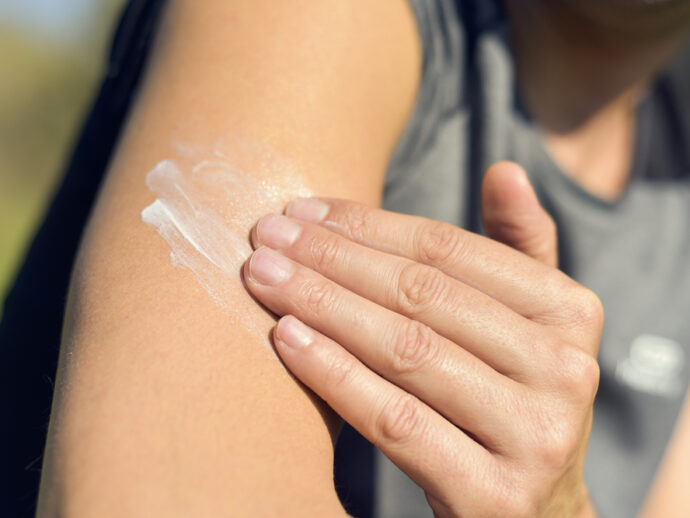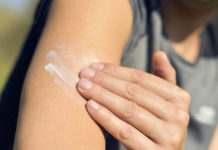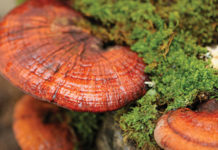
We’ve all heard it—as pleas from caring parents, product taglines, or public service announcements: “Wear sunscreen to prevent skin cancer!”
During summer months we comply—rubbing, spritzing, and slathering coconut-scented creams and sprays onto our exposed skin so that we might avoid a dangerous diagnosis. And why wouldn’t we? It’s a simple equation: the sun produces ultraviolet (UV) rays, which cause sunburns and potentially skin cancer. Using a full-spectrum sunscreen will prevent said UV rays from penetrating the skin, reducing our skin cancer risk.
But what if the equation isn’t so simple?
According to the Environmental Working Group’s (EWG) 12th annual Sunscreen Guide, scientists and public health agencies alike “have found little evidence that the use of sunscreens in isolation from other sun protective measures prevents most types of skin cancer.”
This seems to align with the steady increase in skin cancer cases, according to the National Cancer Institute, which reports melanoma rates “have been rising on average 1.5 percent each year over the last 10 years.”
While this evidence shouldn’t have us tossing our sunscreen habits out the window, it certainly suggests we take a moment to re-examine our relationship with and understanding of sunscreen, so we can make better informed decisions about our health and the health of our families.
Is sunscreen effective against skin cancer?
Without a doubt, UV rays cause skin cancer. But under the umbrella term “UV rays” are UVA rays and UVB rays—both dangerous in their own ways.
UVB rays make up about 3 to 5 percent of the UV rays reaching the Earth’s surface and are the primary cause of precancerous DNA mutations and the dreaded sunburn. Many commercially available sunscreens, when applied correctly, block UVB rays and therefore prevent sunburn.
However, prolonged sun exposure, even when not resulting in sunburn, can have dangerous consequences. UVA rays—responsible for tanning—penetrate deeper than UVB rays, generating free radicals that can lead to DNA damage and cause skin cancer. Unfortunately, most sunscreens protect from sunburn and not much else, since UV rays break down the most common chemical UVA filter, avobenzone.
Protection against your sun protection
To better understand the difference between “good” sunscreens and “bad,” it’s important to distinguish between those using mineral filters and those using chemical filters as the active ingredients.
Mineral filters include zinc oxide and titanium dioxide, which are stable in sunlight and protect well against both UVA and UVB rays. Mineral-only sunscreens tend to stand up to the EWG’s thorough analysis, as they’re also often free of harmful additives.
Chemical filters, on the other hand, have a less-than-stellar reputation and include avobenzone, homosalate, octinoxate, octisalate, octocrylene, and oxybenzone. Oxybenzone—a known allergen—is particularly concerning as a hormone disruptor, as demonstrated by a 2016 study from the Agency for Toxic Substances and Disease Registry. Higher levels of the chemical were associated with lower levels of testosterone in adolescent boys.
Sunscreen and the environment
One thing we often don’t think about with respect to sunscreen is its cumulative effect on the environment. But think about it: we slather potentially harmful chemicals all over our bodies, only to jump into a pool or ocean where those same chemicals leach into the surrounding water.
Thanks to global warming, coral reefs are already facing unprecedented rates of bleaching, with mass bleaching occurring five times more frequently than in the 1980s. Now we can add sunscreen to its list of threats. A recent report from the International Coral Reef Institute cites several studies suggesting oxybenzone may contribute to “bleaching of coral fragments and coral cells from various species of hard coral.”
Oxybenzone, too, has been suggested to harm fish embryos, as shown in a 2018 study analyzing sunscreen chemicals found in the waters of Shenzhen, China. The researchers found that although the zebrafish exposed to multiple common UV filters showed no signs of problems, their offspring displayed abnormalities.
River at risk
BC’s Cowichan River—a popular tubing hotspot—was listed as one of the province’s most endangered rivers in 2018. Recently, news outlets have been digging into the possible connection between trout and salmon decline and the oily film left by sunscreen-slicked visitors, begging the question: is your river at risk?
New sunscreen kid on the block?
Recognizing the hazards potentially contained within many of our current sunscreen products in the form of chemicals toxic to both human and marine life, scientists are busy researching alternative UV-shielding ingredients to replace them.
One such ingredient is shinorine, a natural compound produced in many aquatic organisms that are exposed to strong sunlight, including cyanobacteria and macroalgae, to protect them from solar radiation.
Work is underway to develop an economic and sustainable production method to harvest shinorine for use in sunscreens as well as in cosmetic moisturizers due to its abilities as a water/moisture absorber.
What to look for (and avoid) this summer
Generally speaking, mineral-only sunscreens are your best bet when it comes to sun protection since they’re safe and protect against both UVB and UVA rays. Although these formulas are often made with zinc oxide and titanium dioxide nanoparticles, there is no evidence to suggest the particles penetrate the skin.
For non-mineral sunscreens, always avoid oxybenzone, and do your best to avoid other potentially harmful filters such as octinoxate, homosalate, octisalate, and octocrylene.
With an estimated 7,200 Canadians diagnosed with melanoma in 2017, it’s fair to say that sun safety is more important than ever. Until recently, many of us chose our sunscreen based on superficial factors such as look, smell, and price. Now we need to take into consideration individual ingredients—not only for our health but also for the planet’s.
Next-gen natural sunscreens
Natural, mineral-based sunscreens with zinc oxide and/or titanium dioxide are generally safer than chemical sunscreens (which contain ingredients such as oxybenzone, known to disrupt hormone production and harm marine life)—and the good news is you no longer have to suffer mineral sunscreens’ white, chalky residue.
Some of the latest versions contain refined zinc oxide particles that are small enough to appear clear when applied to skin, but not so small that they can penetrate your skin and enter your bloodstream. Others add tints or neon colors that you’ll actually want to stay put. Either way, you’re covered!
Amy Wood is a sun-loving Vancouver-based writer and editor. Catch her on Twitter @amy_would.




































